On Tuesday and Wednesday of this week, I took four other photographers to the Rockport-Fulton area of the Texas coast to photograph endangered whooping cranes on their wintering grounds at Aransas National Wildlife Refuge. It’s been a tough winter for the birds, even though there is a record number (over 300) of them in that area.
With the severe drought conditions, blue crab (the cranes’ preferred winter diet) production was almost nil this summer and fall. Consequently, the birds were moving inland to feed in burned areas where other food was more readily available. We could see U.S. Fish and Wildlife Service fire crews conducting prescribed burns while we were photographing (you will notice smoke in the background of some of the photos that follow). Food resources in the burns help sustain the birds, but they make it mighty hard for photographers confined to boats in the waterways. Nevertheless, we got plenty of photo action and left with some pleasant memories.
Here are some shots from the whooping crane trip:
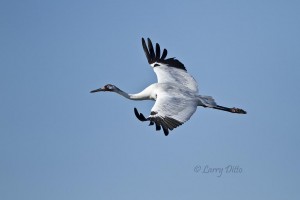
This is a series of flight shots taken under stressful circumstances for yours truly.
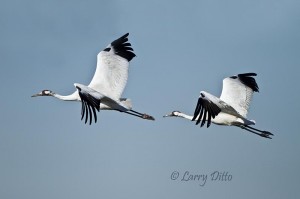
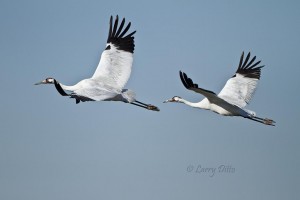
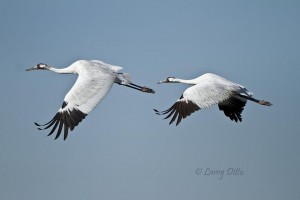
When I am leading a bird photography group, they depend on me to read the birds’ body language to anticipate what will happen next. In this case, the birds simply walked out of the water and took off…no craning of the necks or bugling. I had the photographers alerted that something unusual was going to happen, but I didn’t have time to get my own equipment adjusted for this series of flight shots.
These shots were done at ISO 400, 1/8000 second @ f 4. Each of the frame filling photos appears to have adequate depth of field, but I would have preferred something more like 1/2000 second @ f 11. I was using my trusty Canon 7D camera shooting at 8 frames per second, a Canon IS 500 mm lens, Wimberley head and Gitzo 1348 cf tripod from the deck of a large boat. Suspecting a take-off was eminent, I quickly removed a 1.4X teleconverter and remounted the lens. There was no time to release all the tightened Wimberley knobs before the birds were in the air. As a result, I had to lift camera, lens and tripod into the air as I swung and panned with the birds in flight…not an easy task, but I did it.
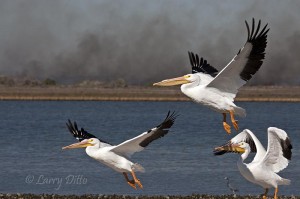

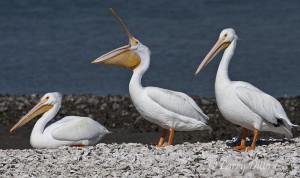
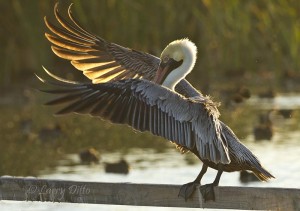
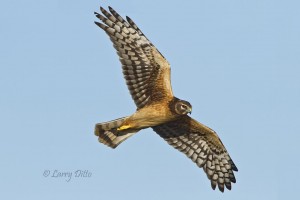
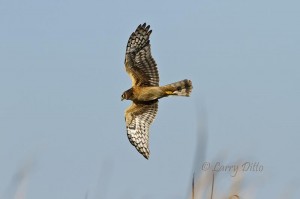
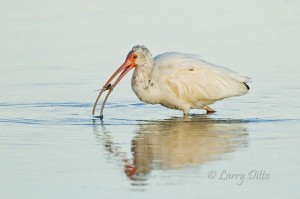
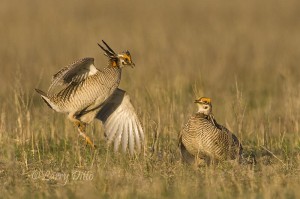
Awesome, is all I can say…..wish I could have made it, but I get a few good shots of the Lamar birds on 8th street…..gonna go back and try to get them using my 5d….awesome work Larry!!! ☺ s
I’m glad you are enjoying the newsletters. Hope you continue to get good shooting, too.
Larry, great shots. I think you still did good on the whoopers flying. Nice lighting and detail. I am going to try to get down there next week on my own.
Sign me up for the Prairie Chicken tour. BTW, where is Canadian Texas. Hopes it not too far to drive.